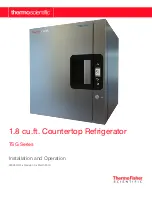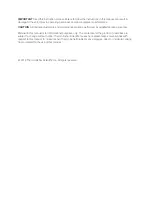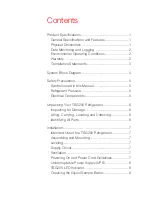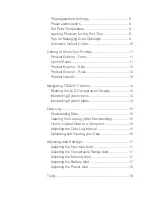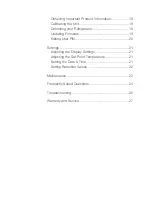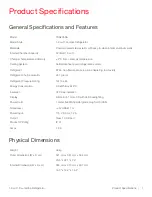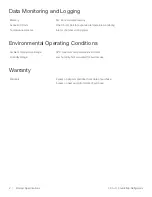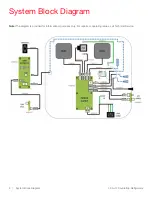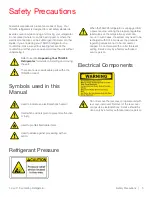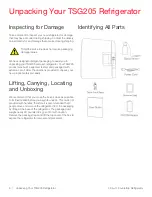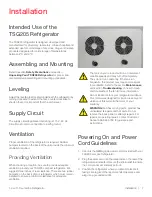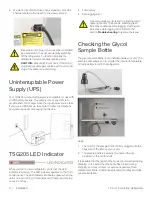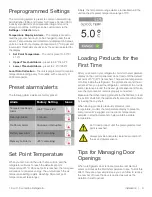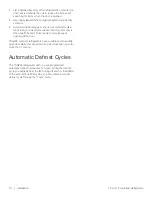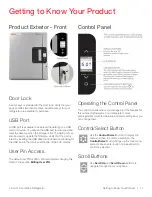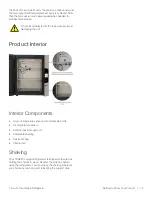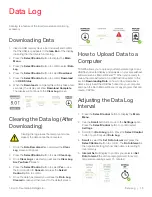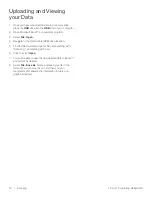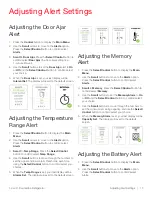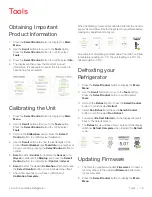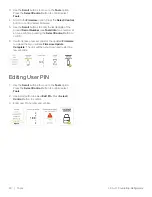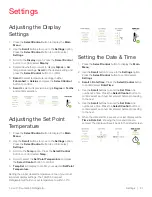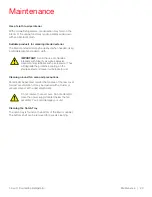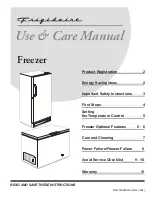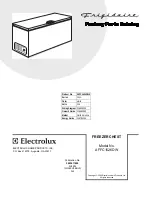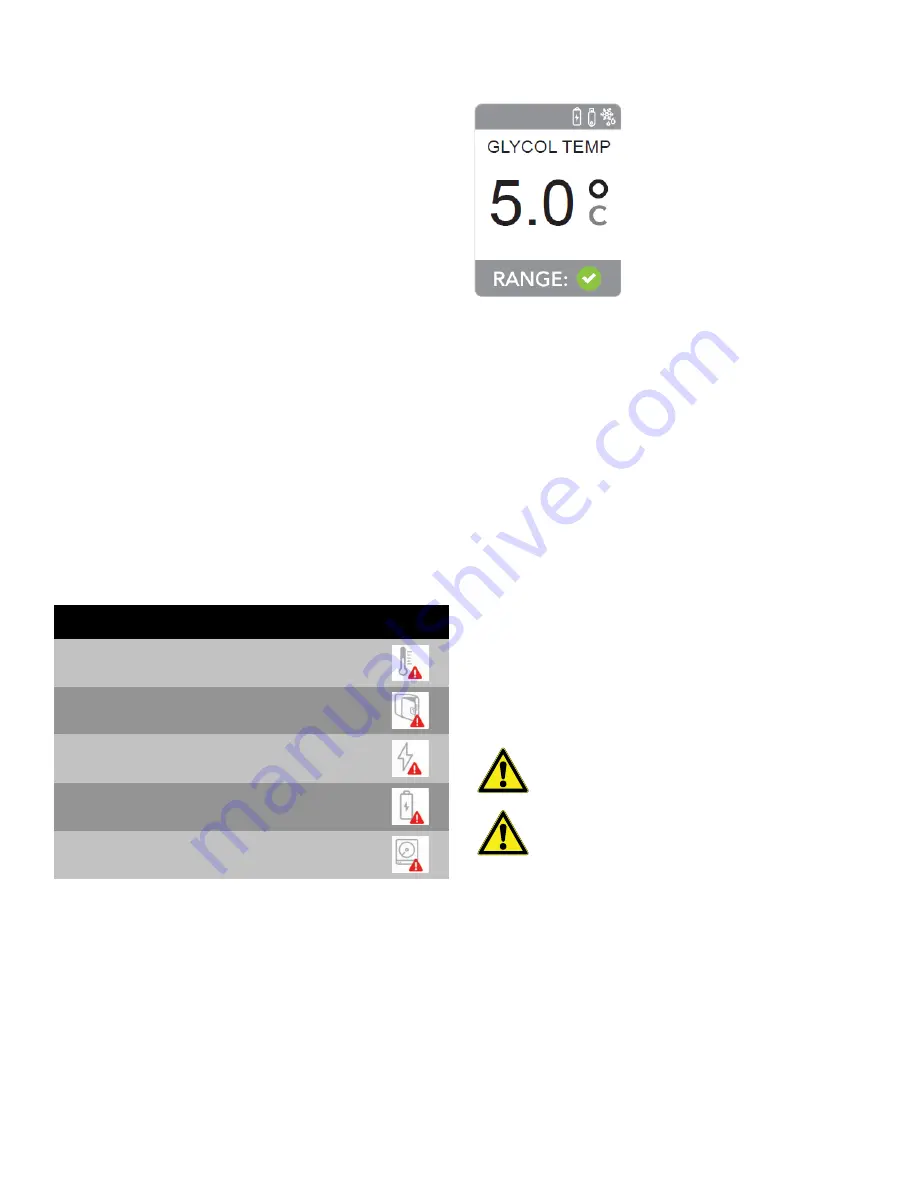
1.8 cu.ft. Countertop Refrigerator
Installation | 9
Preprogrammed Settings
The monitoring system is preset to common Federal Drug
Administration (FDA) and Center for Disease Control (CDC)
industry standards for pharmaceutical drug and vaccine
storage conditions. Settings can be customized via the
Settings
and
Alerts
menus.
Temperature Display & Alarm
– The display is preset to
read the glycol sensor but can be changed to read the air
sensor. Temperatures are detected and displayed in Celsius
units to one tenth of a degree. For example, 5.0°C. Upper and
lower alarm thresholds are driven by the sensor selected for
the display.
•
Set Point Temperature
- The unit is preset to 5.0°C/
41.0°F
•
Upper Threshold Alarm
- preset to 8.0°C/46.4°F
•
Lower Threshold Alarm
- preset to 2.0°C/35.6°F
Local Data Collection
– The unit is programmed to record a
temperature reading every 15 minutes, with a capacity of
4000 data points.
Preset alarms/alerts
The following alarms/alerts are factory preset:
Set Point Temperature
When you first turn on the unit, the fan will run and the
refrigerator will work to reach the default set point
temperature of 5°C. Once set point is reached, the fan speed
will reduce to conserve energy. The unit will reach the air
temperature setting rapidly. Reaching Glycol set point
temperature will take longer.
Initially, the temperature range alarms are disabled until the
unit reaches its preset temperature range of 5°C.
Loading Products for the
First Time
After you power on your refrigerator, monitor the temperature
display on the control panel and do not load until the default
set point of 5°C (41°F) is reached. There are two temperature
monitors inside the refrigerator, the glycol sensor and the air
sensor. When you load the refrigerator, remember to provide
some clearance around the air and glycol sensors and make
sure the glycol sensor remains properly connected.
Make sure that when loading products for the first time to load
the bottom shelf first, the middle shelf second and then finish
by loading the top shelf.
When loading products previously stored at room
temperature, monitor the temperature display to prevent a
compromise. We suggest you load room temperature
samples in small increments to help maintain a stable
temperature.
Tips for Managing Door
Openings
When a refrigerator door is opened, warmer ambient air
enters and causes the interior temperature to rise. To limit this
effect, there are a few simple steps you can follow to reduce
the number of times the door is opened as well as the
duration it is left opened:
Alarm
Factory Setting
Icons
Temperature Range
Alarm
min 2°C max 8°C
Door Ajar Alarm
1 minute
No Power Alarm
Any power interruption
Battery Low Alarm
<30% remaining
Memory Full Alarm
<25% remaining
Don’t load product until the preprogrammed set
point is reached.
Always provide adequate clearance around both
the air and glycol sensors.

